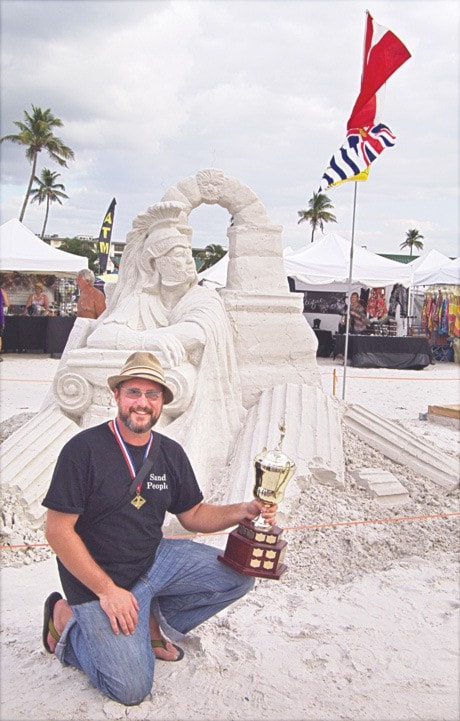With every defining cut into the neck of his soldier, Damon Langlois took a bigger and bigger risk.
Competing at the World Championship of Sand Sculpting, Langlois had three days to shovel 15 tonnes of sand into a form, pack it down, and then whittle it away until his vision emerged.
“You really only get one shot at doing it,” he said. “There’s almost adrenaline as you’re doing it as well, because gravity is obviously a very big part of it.”
At any point, a sculpture could collapse, and many did. Among 24 sculptors competing in the Florida event, three suffered total collapse and four suffered significant collapse.
Using mason tools, palate knives and spray bottles, Langlois sculpted a Roman soldier surrounded by a pile of crumbling columns and archways. With chiselled features and an ornate headdress, the soldier’s head presented a challenge.
“It was extremely risky because all of the overhangs and all the weight that’s there,” he said. “Every millimetre I was cutting away at that neck, I was just waiting for a big chunk to fall off. That would be a case where … I was done for.”
But Langlois pulled it off, and walked away with first place. He calls it the ultimate accolade in the field.
It’s not the first major award the Victoria-based industrial designer has won for sand sculpting. At the 2004 Worlds, he placed first with his team, the Sandboxers, with whom he’s been carving since 1992.
Last week’s win, however, was his first solo win. He competed against many professional sand sculptors whose careers revolve around competition and commissioned works for festivals and other events. By comparison, Langlois competes in five to six events a year. Outside of that, he gets no opportunity to practise his craft.
“I like the medium of sand because … it’s part art, it’s part engineering, it’s part magic, part illusions, part performance,” he said.
“I like the fact that it’s ephemeral. That it goes away when you’re done. It’s the opposite of what I do as a product designer where everything you do is permanent and hundreds of thousands of your designs will be manufactured.”
rholmen@vicnews.com
